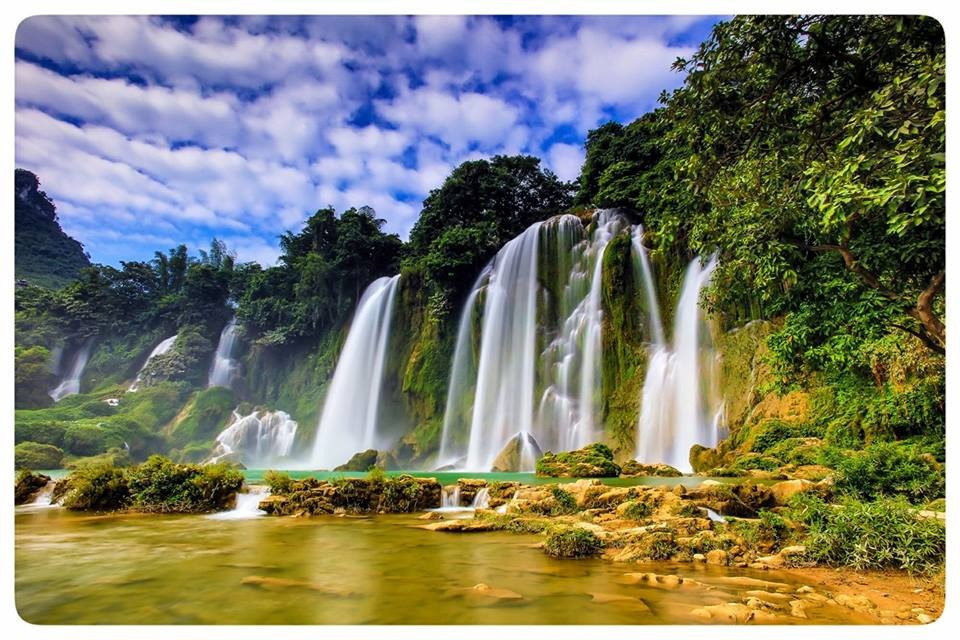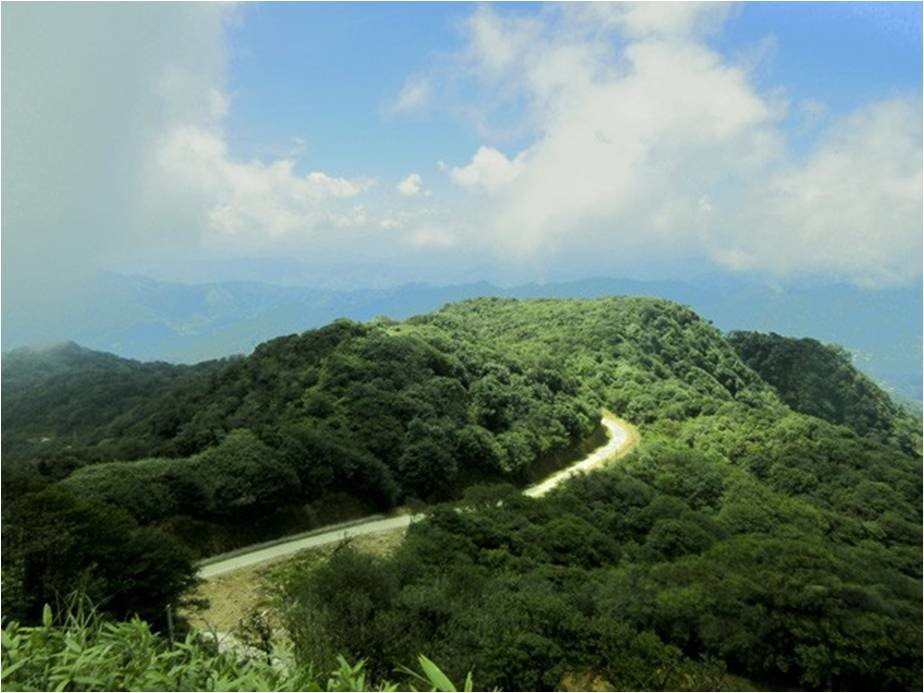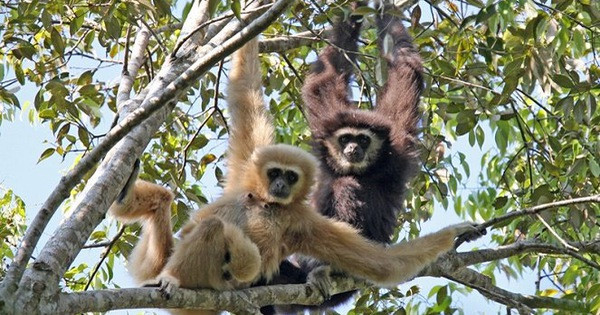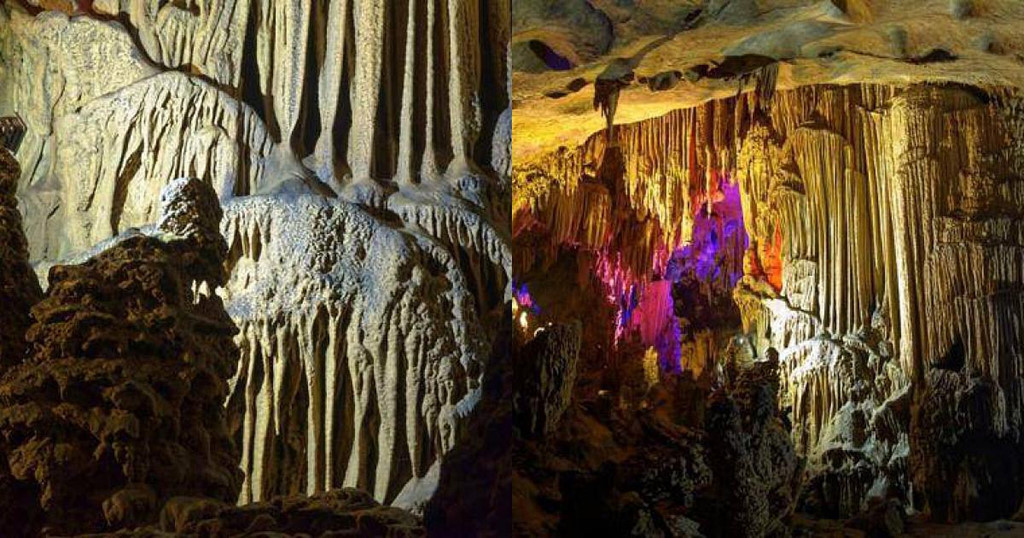Multi-facet values of Non Nuoc Cao Bang Geopark
(VNF) - Non Nuoc Cao Bang Geopark was recently declared a new member of the UNESCO Global Network of National Geoparks, in recognition for its values in various aspects.

|
Cao Bang's most beautiful time is from September to December, when the streams and waterfall are full of water (photo: Huu Thong)
Non Nuoc Cao Bang Geopark is located in the north of Vietnam, 300km from Hanoi Capital, and has an area of 3,000km2. It includes 6 districts: Ha Quang, Tra Linh, Quang Uyen, Trung Khanh, Ha Lang, Phuc Hoa and part of other 3 districts: Hoa An, Binh Nguyen and Thach An. This is home of 9 different ethnic groups, including Tay, Nung, Mong, Kinh, Dao, San Chay.
Historical value
Non Nuoc Cao Bang Geopark is also land of many tangible and intangible cultural heritage sites, especially historical monuments, of which there are two Special National Monuments: Pac Bo, where President Ho Chi Minh lived and worked the early days to lead Vietnam’s revolution.
The main historical relics consist of Pac Bo, Coc Bo, Bo Bam Cave, Lenin Stream, Karl Marx Mountain, Co Rac Ground and Khuoi Nam. The famous Coc Bo Cave is where President Ho Chi Minh established his residence and worked on Vietnam's revolutionary course after spending 30 years abroad to seek ways to liberate the country.

In Pac Bo cave, visitors can learn about the great life of President Ho Chi Minh which is part- reflected through his optimistic revolutionary verses. (photo: Hoang Ha)
Inside the cave there is a wooden board which was used as a bed for Uncle Ho. In this place, Uncle Ho, in the simple dress of the Nung ethnic group, sat by the fire at night to discuss with his assistant Pham Van Dong, Vo Nguyen Giap and Phung Chi Kien on the situations at home and abroad.
It was also where the great leader predicted: "In four or five years, the Vietnamese revolution will be successful," which was proven true, since four year later, on September 2nd, 1945 the Democratic Republic of Viet Nam, the first State of workers and peasants in Asia, came into being.
Located around 1km from the mouth of Pac Bo Cave, there is a small shack by the side of Khuoi Nam Mountain. In this shack Uncle Ho held the eighth Party Central Committee Meeting, which promulgated a resolution on preparations for the armed insurrection and the establishment of the Viet Minh and the revolutionary war zone. Adjacent to the shack is milestone 108 marking the Viet Nam-China border, where Uncle Ho bowed to kiss the beloved land of his country, after many years living abroad.
Biological value
In terms of plant biopersity, the forest vegetation in Cao Bang Geopark is very rich and has many rare tropical species such as: ngũ gia bì gai (Eleutherococcus trifoliatus), mã đẩu linh (Aristolochia indica), đinh (Chukrasia tabularis), Indian mahogany (burretiodendron hsienmu), iron wood (Cinnamomum parthenoxylon), tam thất (Drynaria fortunei).
 |
Phia Oac National Forest in Cao Bang Geopark (source: Caobanggeopark.com)
The high mountains, in particular the Phia Oac Mountain (Nguyen Binh district), are home to rare temperate species including yellow wood (Cupressus torulosa), pine power (Podocarpaceae), du sam (Keteleeria) etc.
Moreover, Cao Bang Geopark has many peculiar species, which are evergreen bamboo (Bambusa multiplex), trúc sào (Phyllostachys edulis), star aniseed (Illicium verum), and dẻ ăn hạt (Vernicia montana) and some other medicinal plant species including tam thất (Panax pseudoginseng), hà thủ ô đỏ (Fallopia multiflora) and kim tiền thảo (Desmodium styracifolium), together with bitter tea tree.
Bitter Tea Tree, (Ilexe kudincha C.J.T seng), one specialty of Cao Bang, is a rare plant species. It grows naturally on rocky mountains. It is used as a drink, and for disease prevention and treatment.
 |
Cao Vit gibbon in Cao Bang Geopark (source: VNA)
In terms of animal biopersity, the forests in Cao Bang Geopark are habitats for many rare animal species: tigers, leopards, bears, monkeys, deer, black gibbons, wild boar, chamois, wolves, civet and many species of bird.
Cao Bang Geopark has 58 animal species, 44 of which are rare and listed in the Vietnam Red List: including Cao Vit gibbon, tiger, bear, deer, serow, musk incense, pheasant, red pheasants, and iguana.
Some common reptile species are also found: python, snake, cobra in Thach An, Hoa An, Nguyen Binh, Bao Lac; yellow and black-ringed krait (Bungarus fasciatus), Black and white – ringed krait, Viperidae living in rocky areas; ba ba gai (Palea steindachneri), ba ba trơn (Pelodiscus sinensis) in rivers and streams; otter (Lutrinae) and other freshwater fish species.
Geological value
Non Nuoc Cao Bang Geopark is an exceptional territory where it is possible to read the history of our Planet Earth for over 500 million years through protected sites. Here, fossils, marine sediments, volcanic and plutonic rocks, and minerals are the witnesses of this fantastic evolution and changes of our Planet and constitute an exceptional geological heritage.
In Non Nuoc Cao Bang, geologists and tourists can find limestone of Devonian to late Permian age, which occurs in most of the Ha Quang, Tra Linh, Trung Khanh, Quang Uyen, Phuc Hoa and Ha Lang districts, covering in total 60% of the area of Cao Bang Geopark. The karst landscape in Cao Bang is mostly mature to old age. Cao Bang Geopark can be regarded as a “land of caves”.
 |
Ky Rang cave in Cao Bang Geopark (photo: Evan)
Most of the caves are developed laterally and are of considerable size. An outstanding feature of the caves is the extensive and well-preserved system of speleothems decorating the cave ceilings and walls.
Among the total of 400 caves surveyed throughout Vietnam, Cao Bang has 12 of the 30 longest caves (1km to 19km long) including: Nguom Sap (5379m), Ban Ngam (3600m), Nguom Nam Lao (3360m), Ki Lu (3353m), Pac Bo (3248m), Pac Lung (3109m) and Nguom Ngao (2769m).
Some 200 caves have been identified in Cao Bang by various Vietnamese expeditions and those of other countries such as France, Italy, UK, Romania, and the USA (Howard Limbert, 2003, 2005; Geokarst, 2012, 2015).
Of these, 50 caves have potential for tourism development, such as Nguom Ngao, Ki Lu or Doi. However, most of them have not yet been opened to tourists, so there are many future possibilities./.
( Phi Yen )
Recommended
 Travel
Travel
Vietnam Through Australian Eyes: Land of Flavor, Warmth, and Timeless Charm
 Travel
Travel
Strategies for Sustainable Growth of Vietnam’s Tourism from International Markets
 Travel
Travel
Vietnam Strengthens Its Presence On The Global Tourism Map
 Multimedia
Multimedia
Phong Nha-Ke Bang National Park Named Top Adventure Travel Site
 Travel
Travel
Vietnam Welcomes Record-High Number of International Visitors
 Travel
Travel
Luxury Train From Hanoi To Hai Phong To Be Launched In May
 Travel
Travel
Phong Nha Named Top Budget-Friendly Travel Destination for Spring 2025: Agoda
 Travel
Travel
